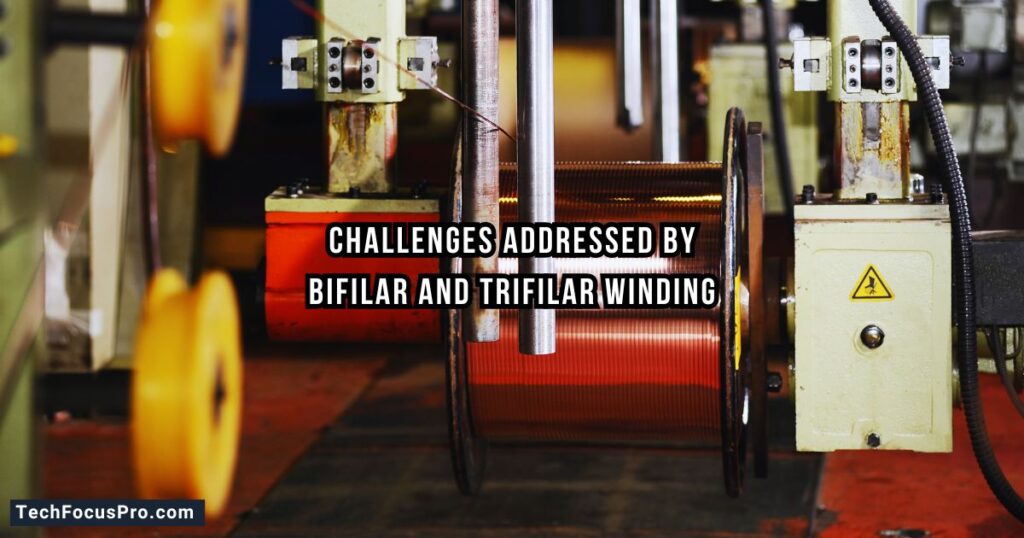What is Bifilar and Trifilar Coil Winding & The Challenges it Solves

Bifilar and Trifilar Coil Winding are advanced processes that produce coils with specific electrical properties. These techniques are vital to medical functions, such as the production of organs, devices, sensors, and other electronics.
This article discusses bifilar and trifilar coil winding, the problems it solves, and how it influences technology.
Bifilar and Trifilar Coil Winding Explained
Coil winding is a process used to create coils by winding wire around a core. Bifilar and trifilar winding refer to specific methods of winding coils:
- Bifilar Winding: In this winding method, the two wires are wound around the core simultaneously. This technique forms a coil with two parallel conductors. It can obtain required electrical parameters such as inductance or resistance to electromagnetic interference.
- Trifilar Winding: The most common method of winding is the trifilar method, where the three wires are wound on the core simultaneously. This method can be used to obtain coils with specific characteristics like symmetrical impedance or improved signal transmission. Trifilar winding is applied in circuits that demand certain levels of accuracy and stability.
Also Read: 3D Printer Filament: Best Materials For PLA Filament
Challenges Addressed by Bifilar and Trifilar Winding

Bifilar and trifilar coil winding techniques address several challenges in electronic and medical device manufacturing:
- Electromagnetic Interference (EMI): Coils wound using bifilar or trifler methods can be designed to minimize EMI emission. This is even true in the medical field, where measurements have to be very accurate, and any interference may lead to wrong readings or malfunctions of the equipment.
- Precision and Stability: Bifilar and trifilar winding methods improve the coil operations’ precision and stability. This is especially important for applications like sensors and diagnostic tools where minute differences are important.
- Compact Design: The ability to obtain the required electromagnetic characteristics with small-sized coils is useful for the miniaturization of electronics. This is particularly the case in the medical device industry, as miniaturization of devices also reduces the space available to accommodate components.
- Improved Signal Quality: Bifilar and trifilar winding techniques can even help enhance signal fidelity by using twisted wires together. This is important for applications operating at high frequencies and for devices where the signal must be transmitted accurately.
- Enhanced Performance: Depending on the choice of the bifilar or trifilar winding methods, certain over-performance can be experienced in the functionality of the electronic components. For instance, coils made with these techniques could show greater inductance and lesser resistance, thus increasing the efficiency of transformers, inductors, and so on.
Applications in Medical Devices
Bifilar and trifilar coil winding methods are best suited for medical applications because they improve the accuracy and durability of the coils. For instance, they are applied in the production of sensors and diagnostic tools, where high precision and performance stability are indispensable. They are also used in the manufacturing of medical imaging products like MRI machines, where excellent magnetic field requirements are needed for clear imaging.
FAQs
What is difference between bifilar and Trifilar method?
The difference between bifilar and trifilar winding lies in the number of wires used.
- Bifilar winding uses two wires wound in parallel around a core.
- Trifilar winding uses three wires wound in parallel.
Both methods enhance the electromagnetic coupling and reduce parasitic effects. Still, trifler winding allows for more complex configurations and higher current capacity.
What are the different types of coil winding?
The different types of coil winding include:
Single-layer winding: Wire wound in a single layer around the core.
Multi-layer winding: Multiple layers of wire wound on top of each other.
Bifilar winding: Two wires wound in parallel.
Trifilar winding: Three wires wound in parallel.
Progressive winding: Wires wound in a continuous spiral pattern, often for large coils.
Random winding: Wires are wound in a non-uniform or scattered way.
Honeycomb winding: Wire is wound in a crisscross pattern for improved performance at high frequencies.
What is the advantage of a bifilar winding?
The advantage of bifilar winding is that it reduces parasitic inductance and electromagnetic interference, improves coupling between wires, and enhances overall efficiency in transformers and inductors. It also helps minimize energy loss and increases performance in high-frequency applications.
What Are the Drawbacks of Bifilar and Trifilar Coil Winding?
Complexity in Manufacturing: Winding multiple wires in parallel can be more challenging than single-wire winding, requiring precision to avoid short circuits.
Increased Material Costs: Using more wires increases the conductor material required, which can drive up costs.
Potential for Short Circuits: Closely spaced conductors are more prone to insulation breakdown or short circuits.
How Do Bifilar and Trifilar Windings Impact Inductance?
The inductance of a coil can be manipulated by varying the spacing, number of turns, and configuration of the wires. In bifilar or trifler windings, mutual inductance between the wires can help control the overall inductive properties, which is useful in fine-tuning components for specific performance.
Are There Specific Core Materials Preferred for Bifilar and Trifilar Windings?
Yes, ferrite cores and other magnetic core materials are often preferred because they help manage the magnetic field more effectively, particularly in high-frequency applications.
How Can the Winding Techniques Affect Power Loss?
These winding techniques can significantly reduce power losses in a system, particularly by mitigating the skin effect and reducing leakage inductance. The improved coupling also results in more efficient energy transfer, reducing losses.
Conclusion
Bifilar and trifilar coil methods make important contributions to enhanced electronics and medical equipment. When faced with issues such as electromagnetic disturbance, accuracy, or signal quality, these methods help to improve the quality of stable and high-performance elements. This is an indication of how their applications cut across different fields, defining their importance in the ultimate growth of technological features on devices.






